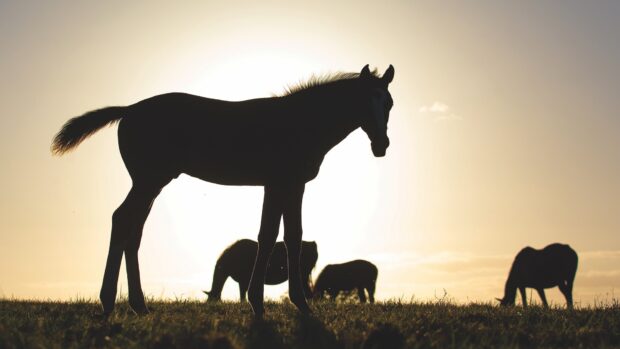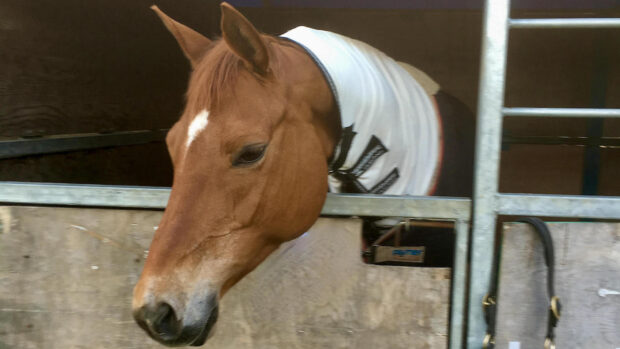Hope is alive that new research into the relationship between the way horses’ legs move when galloping on different surfaces and with different shoeing methods could help reduce injuries.
The Royal Veterinary College (RVC) research measured the time it took for a hoof to push off from the ground – known as the “breakover” time – in 13 retired racehorses. More specifically, the breakover time is the period between which the horse’s foot starts to push off from the floor, rotating through an approximate 90-degree angle before lifting off.
The researchers looked at breakover speed on the front and hindlimbs on different surfaces at different gallop speeds and with different shoeing methods.
“For many years, racehorse trainers have had varied opinions on running their horses on turf or all-weather surfaces, shod or unshod. Some suggest that horses should be shod all round, just with front shoes or none at all,” said lead farrier James Coburn.
“As a farrier, I was keen to see how breakover was affected by different shoeing and surfaces, and it was brilliant to be part of a project that combined traditional farrier techniques with a scientific approach and modern technology.”
Equine locomotion experts Kate Horan, Thilo Pfau and professional farrier Peter Day from the RVC worked with the British Racing School and farriers in Newmarket on the Horserace Betting Levy Board-funded study. It was published in veterinary science journal Animals.
They sought to identify whether the breakover period was impacted depending on whether horses are left barefoot or shod in aluminium, steel or GluShus (aluminium-rubber composite shoes).
Shoeing conditions were assessed on both turf and artificial (Martin Collins Activ Track) training surfaces.
Breakover duration was found to increase on turf compared to the artificial track for all limbs. The non-leading hindlimb was additionally sensitive to shoeing condition and an interaction that occurred between shoeing condition and speed. Breakover duration was also found to decrease as speed increased and the researchers found this trend was more marked in the hindlimbs compared to the forelimbs when galloping above around 45km/h.
While further research is needed to establish how variations in individual horses could impact breakover times, the study forms part of a base from which further investigations can stem into how this could translate to performance improvements and injury prevention.
Dr Horan also pointed out how some of the findings could be useful in real terms now.
“It could be helpful for trainers to pay attention to the non-leading hindlimb if they are considering changing a horse’s shoeing condition,” she told H&H. “Trainers may, therefore, want to pay particular attention to the non-leading hindlimb following any shoeing changes when the horse is galloping around bends also. Although this could be either of the hindlimbs, because racecourses often go in one direction in a circuit, the non-leading limb would be the outside hind.”
Dr Horan added that the results show one aspect of hoof-surface interaction, of which there are many.
“Investigating factors that might influence the duration of breakover is relevant for the performance and safety of galloping racehorses and their jockeys, both in training and racing contexts,” she said.
She explained that push-off from the hind hooves is critical for generating propulsion at gallop, but as the heels lift, the likelihood of slippage is perceived to increase. This is why it is relevant to collect data under different conditions, to understand the controls – elements unchanged by other factors – on this movement.
“Further work is needed to establish the link between breakover duration and performance [and/or] injuries specifically,” she said.
“By improving our understanding of both the nature hoof-surface interaction itself, as well as how this translates into horse-jockey upper body movements, we hope to assist those involved in the racing industry to make informed decisions to improve stability, minimise the risk of injury and optimise the performance of galloping racehorses and their jockeys.”
View the Royal Veterinary College research in full
You might also be interested in:
Horse & Hound magazine, out every Thursday, is packed with all the latest news and reports, as well as interviews, specials, nostalgia, vet and training advice. Find how you can enjoy the magazine delivered to your door every week, plus options to upgrade your subscription to access our online service that brings you breaking news and reports as well as other benefits.




